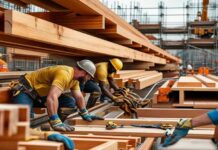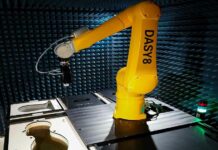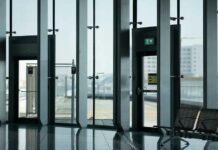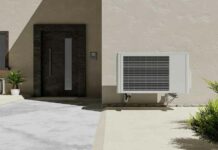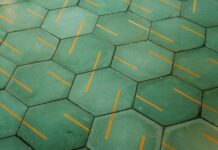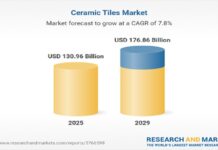The design of passive, net-zero buildings has received redoubled attention in recent years. One innovative feature that is helping in this regard is commercial louvers. By controlling the flow of ambient air into a structure, louvers help create fresh, comfortable environments for building occupants while reducing reliance on HVAC and other ventilation systems. In this breakdown, we will look at the various ways that louver technology is improving modern commercial building design.
What Is a Commercial Louver?
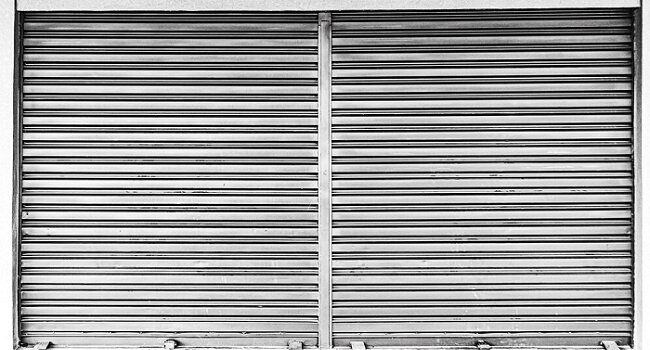
A commercial louver is an architectural or mechanical system that includes a set of blades, either fixed or adjustable, that allows the passage of air into a facility while restricting water, dirt, and debris. They are usually installed in walls, doors, windows, or exterior shading structures. They help regulate airflow and contribute to the optimal ventilation of a space. They are critical components of ensuring indoor air quality in commercial structures.
What Are the Benefits of Commercial Louvers?
There are myriad benefits of architectural louvers for a commercial building.
First and foremost, they enhance the comfort and functionality of a building. They let fresh air in and force old, stale air out. This produces a more comfortable interior air environment that is free of dust, allergens, and toxins that have accumulated in a facility.
In addition to these ventilation benefits, some other positive features of commercial louvers include:
- Storm protection – specialized louvers can help keep blowing storms from creating moisture damage for the building envelope.
- Noise reduction – many louvers provide soundproofing and noise attenuation features for a more tranquil interior environment.
- Aesthetics – commercial louvers provide a modern, textured aspect, providing an element of architectural intrigue that boosts commercial facades.
- Pest control – most types of louvers have a screen that keeps birds and pests out of the structure. They work particularly well in remote areas of the building where regular pest control is not practical.
Due to these many benefits for building performance and occupant comfort, commercial louvers are becoming an increasingly integral component of modern, sustainable building design.
What Materials Are Used for Louvers?
Some of the most common materials used in louver construction are wood, glass, vinyl, aluminum, and steel. With that said, aluminum and steel are the most widely used materials in commercial applications. They are extremely durable and offer the utmost weather resistance. Aluminum and steel can be fabricated in numerous designs that further enhance the building’s aesthetics. Their low-maintenance properties ensure ongoing performance and appearances with minimal intervention required by building management.
What Are the Different Types of Commercial Louvers?

There are a number of distinct styles of commercial louvers. As such, it is critical to understand the needs of your facility to find the solution that works best for your enterprise.
Fixed Louvers
This is the most common type of commercial louver. Fixed louvers feature stationary blades. They work best in applications that face consistent ventilation needs, as the blades cannot be adjusted. They keep fresh air flowing into a facility while mitigating rain, debris, and insect intrusion at a lower price point than more specialized louvers.
Adjustable Louvers
Adjustable louvers operate in the same way as commercial louvers. They let the good in and keep the bad out. However, they offer the additional benefit of being able to control air volume as needed. This gives the building greater adaptability for ensuring occupant comfort in the face of diverse weather conditions.
Acoustical Louvers
Acoustical louvers help control airflow within a building while also serving as sound attenuators. This helps limit noise pollution in bustling areas that feature significant human, vehicle, and/or construction traffic. They are a preferred option for promoting indoor air quality in areas where tranquil interior environments can be difficult to achieve.
Blast Louvers
As their name implies, blast louvers are designed to withstand high pressure and blast loads. This makes them perfect for many industrial and power generation applications. These types of reinforced louvers are almost always made of steel and are often fully-welded to the structure they serve.
Blowing Rain Louvers
These specialized louvers are designed to prevent moisture intrusion even when wind is blowing rain straight into the louver. It is a great solution in coastal climates, where commercial buildings are likely to experience hurricane conditions from time to time.
Louvered Roofs
Louvered roofs are beneficial for exterior shading to add functionality to outdoor workspaces and scaffolding innovations. Many types of louvered roofs feature rain sensors that close the blades when precipitation is detected. Others have UV-sensing features that provide adjustable shading. Still others are controlled by smartphone applications for customized comfort in exterior environments.
Improve Air Quality Today with Innovative Commercial Louvers
Commercial louvers are an integral component of modern building design. From improved air quality to sound attenuation, louvers can create a more productive, comfortable commercial building environment. For more of the latest trends shaping the commercial construction landscape, explore the resources at World Construction Today for the leading insights in the industry.





